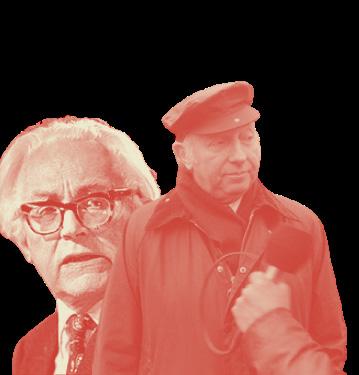Unite to win: lessons from 1997 for 2024 Beth Nott, PPE at Brasenose College
14
look left MT20
We cannot keep losing. This is a statement as true in 2020 as it was in 1995: now, as then, we have lost 4 consecutive elections to the Conservatives; and now, as then, this has led to great harm to the poorest in our society. In the 80s, Thatcher privatised and deregulated, and stripped our unions of their power; in the 2010s, the Conservatives oversaw huge cuts to public spending that hit the neediest the hardest. In both periods too we have seen the left wing of the party take hold and publish a radical manifesto, promising the world while not being able to deliver it. Though the political situation in the 2020s is very different to that of the 1990s (notably the SNP being such a major force in recent years, cutting into majorities for both parties), I think it is right for the Labour party to look at what caused our victory in 1997 and learn lessons from it for our next general election fight in 2024. I will be clear here and say that this doesn’t necessarily mean that I think we need to become an explicitly centrist party, as New Labour was, but many of New Labour’s characteristics are replicable by an explicitly socialist party, and ought to be replicated by Labour if we are to win. These characteristics are unity, strength of leadership, competence, and practical policy. I will start this essay by outlining how New Labour succeeded in these four areas, then set out what the Labour of today needs to do to succeed in these four areas. New Labour had unity. ascension to leader ter the
Tony Blair’s in 1994 aftragic and s u d d e n death of John Smith brought with i t a
programme of reform to the party that had started with Kinnock and Smith but gained new heights with Blair. Labour suffered an enormous defeat in 1983, with Foot’s “longest suicide note in history” manifesto, and sought to reshape its image to appeal to a wider demographic. While naturally the left of the party were not completely on board with all the changes, with some (like Arthur Scargill) leaving the party altogether, on the whole the party were united under the idea of modernisation and broadening its appeal – they knew they had to win in 1997 above all else. In the public view, therefore, Labour were united. On the other hand, the Conservatives were utterly divided – over Europe especially, but also about the larger Thatcherite project. This juxtaposition strengthened Labour’s message further. This unity was further strengthened by the figure of Blair – a young, energetic, idealistic leader with his party behind him. Things could only get better, the possibility that it could was personified in Blair. He was a modern figure for a new millennium of politics. While many of his actions in office should rightfully be criticised, the Blair effect cannot be ignored or swept away. Accompanying Blair in the package offered to voters in 1997 was Gordon Brown, and the two together provided stability from the top. Brown served as Chancellor for the full 10 years of Blair’s premiership, the longest since Pitt the Younger in the late 18th century. With these two packaged together, the New Labour leadership team was cohesive and internally unified in thought and policy – voters choosing Blair knew they were also choosing Brown, and that the two together would be on the same page moving forward. This package helped show that this new version of Labour was competent. The most important thing that New Labour needed to do was differentiate itself from the specifically economic failures of Labour’s past (e.g. the Winter of Discontent 1978-9) and the recent Conservative past (e.g. the Euro crisis of 1992). They did this through positioning their economic policy as ‘third way’ – not Thatcherite monetarism








